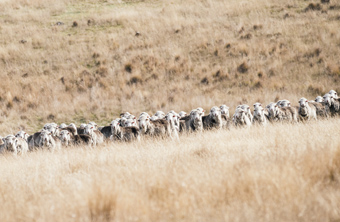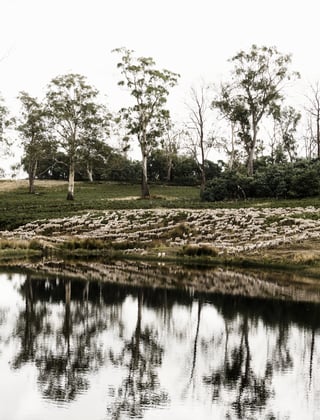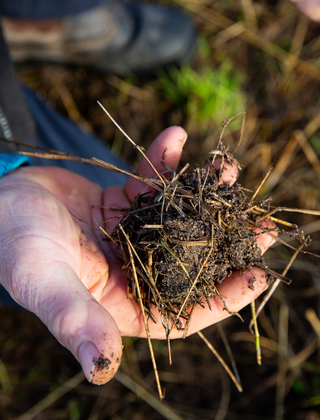Drought Resources
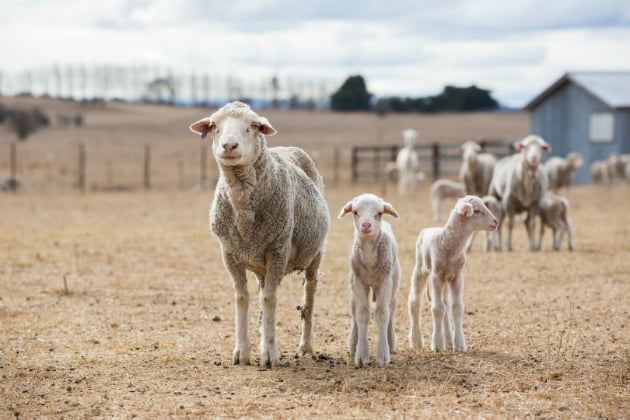
AWI has a range of drought planning, management and recovery resources available for woolgrowers going into, enduring, and recovering from drought.
Dry seasonal conditions need to be planned for, and carefully managed for the sustainability of woolgrowing enterprises, the industry and the environment.
AWI has a range of drought planning, management and recovery resources available for woolgrowers going into, enduring and recovering from drought.
According to the 2008/09 national review of drought policy, drought conditions in Australia are likely to occur more often and be more severe in key agricultural production areas.
Click the dropdown arrows below to access all drought resources
Managing Sheep in Droughtlots
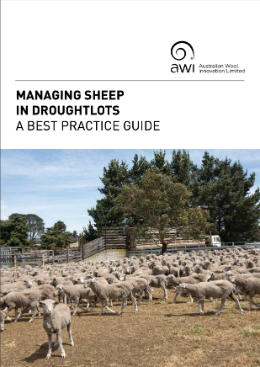 The information in this publication aims to highlight the purpose, benefits and experiences of sheep producers managing sheep in containment areas.
The information in this publication aims to highlight the purpose, benefits and experiences of sheep producers managing sheep in containment areas.
One of the most important issues for any farm business emerging from drought is the need to restore the business to optimum productivity and profitability as quickly as possible. The purpose of the droughtlot is to assist this specifically by:
- Preserving preferred pasture density or composition.
- Minimising soil and nutrient loss from bare ground.
Stock Water
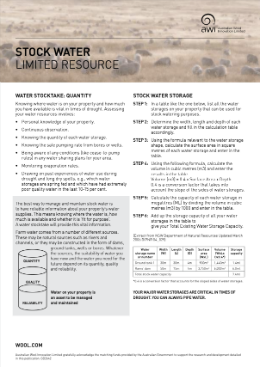
Knowing where water is on your property and how much you have available is vital in times of drought.
The best way to manage and maintain stock water is to have reliable information about your property’s water supplies. This means knowing where the water is, how much is available and whether it is ‘fit for purpose’. A water stocktake will provide this vital information.
Managing Fodder Prices for Droughts
Knowing where water is on your property and how much you have available is vital in times of drought.
The best way to manage and maintain stock water is to have reliable information about your property’s water supplies. This means knowing where the water is, how much is available and whether it is ‘fit for purpose’. A water stocktake will provide this vital information.
Feeding and Managing Sheep in Dry Times
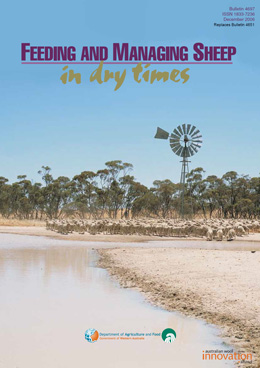
Feeding sheep is a significant cost to any sheep or mixed farm enterprise in southern Australia. The cost is usually managed by annually sourcing feed on-farm. However, this feed source can become scarce when we experience unusual dry spells within seasons (termed a ‘dry season’, such as a dry winter or spring), a late break to the season, a drought year, or even worse, successive drought years.
This publication aims to provide farmers with practical guidelines and examples, for feeding and managing sheep during dry seasons and drought years. Whilst the publication focuses on dry times and confinement feeding systems (feedlots), it does also include some useful information on getting through the normal summer autumn feed gap period.
Decision planning for selling stock
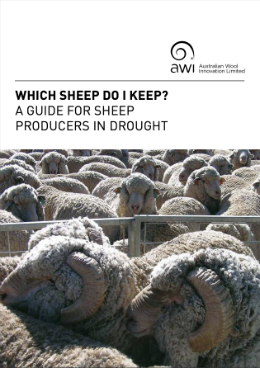
When confronted with a pasture shortage, sheep producers must determine whether to sell or supplementary feed all, some or none of the flock.
The manager must have a disciplined approach to working out the best strategy at the time. To work it out they must be able to estimate the following:
- The current value of the livestock.
- The probable cost of feeding.
- The value of any production that would be gained should sheep be kept.
This document aims to provide a robust framework from which an educated opinion can be formed and plans implemented.
Drought Feeding and Management of Sheep
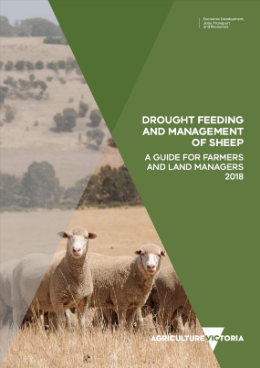
Droughts and dry seasons are a regular part of farming in Australia. They bring hardships to farming enterprises, farmers and their families, and rural communities.
This book is a practical guide to sheep feeding and management during a drought to help producers plan their response in manageable steps.
How well you survive a drought will depend on the information sourced, the initial plan of action and the modifications to the strategy as the drought progresses.
Feeding guidelines in this book have been developed from both research and farmer experience. Strategies for managing droughts, including supplementary feeding rates, will depend on the cash flow situation as well as the financial recovery timeline and this will differ for each farming business.
This resource should be used in conjunction with practical training in pasture assessment and condition scoring of sheep. The feed requirements outlined.
Releasing sheep from containment feeding
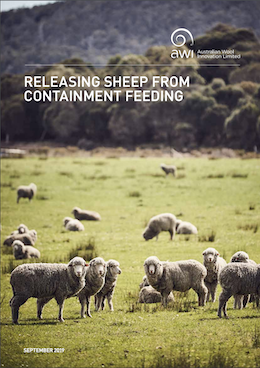
Releasing sheep from containment feeding
Containment areas or droughtlots, are purposebuilt facilities used to feed and manage sheep during times of low pasture availability. They can help to minimise pasture and environmental damage from overgrazing, reduce the labour costs associated with hand-feeding sheep and better manage animal condition through reduced energy requirements and more targeted feeding regimes.
Managing the transition from containment to pasture must be done carefully to minimise the risk of any animal health issues, particularly for pregnant ewes, as well as ensuring that wool quality is not affected.
Livestock Safety During Bushfires
Guidance prepared by PIRSA about how to ensure the safety of your livestock during bushfires. Whilst caring for livestock and other animals before and after a bushfire is essential, personal safety should be considered as a first priority on all occasions.
Be sure to get your Bushfire Survival Plan up to date and to hand.
Recovering from drought and bushfire
If you have been lucky enough to get rain recently or have been affected by bushfires, then you may be considering purchasing sheep. However, you need to make sure you're not purchasing a whole heap of unwanted problems too. This document provides some key issues to consider, plus links to AWI and external resources.
Planning for profit
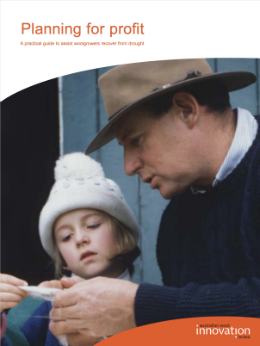
Planning for profit - a practical guide to assist woolgrowers recover from drought covers pasture utilisation, through flock fertility and weaner management to genetics - all-important components of flock recovery strategies.
They are presented in an order that relates to a suggested approach to identifying priorities at the individual flock level, starting with the easy options which are still critical but in some cases at a higher cost.
Drought Resources
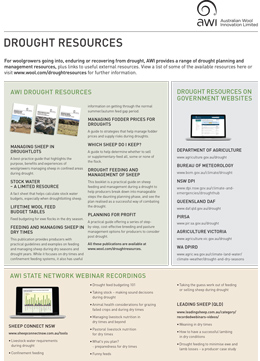
Drought Resources
For woolgrowers going into, enduring or recovering from drought, AWI provides a range of drought planning and management resources, plus links to useful external resources. Download the list of some of the available resources below.
Tools
Woolgrower tools support decision making in dry times.
Standard Reference Weight Calculator
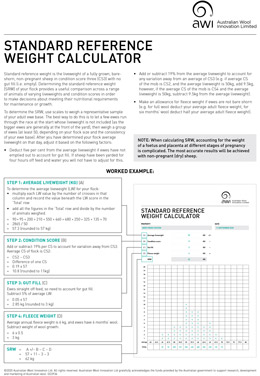
Determining the standard reference weight (SRW) of your flock provides a useful comparison across a range of animals of varying liveweights and condition scores in order to make decisions about meeting their nutritional requirements for maintenance or growth.
AWI’s Standard Reference Weight Calculator allows you to calculate the SRW for your flock, allowing for more accurate feed budgeting and management decisions.
Cost of production Calculator

Cost of production (COP) is a key factor affecting the profitability of wool producing businesses. COP, measured in dollars per kilogram of clean wool, is an indication of the outlay required to produce each kilogram of wool.
COP is a measure of the efficiency of wool production. Calculating the cost of production is an important step in assessing flock profitability and a first step to making change.
Use the AWI cost of production calculator to:
- Measure wool enterprise performance year on year.
- Compare enterprise efficiency annually against other woolgrowers to identify scope for improvement.
- Help with wool marketing decisions.
Calculate Cost of Production - click the links below to:
-
Read the Wool COP calculator background material with instructions, information on how your COP compares with others and helpful tips.
- Use the Wool COP calculator:
- Use the Making More From Sheep COP calculator for wool and sheep enterprises:
Feed Budgeting

Feed budgeting in the dry period is inherently difficult due to the variability of the quality of dry feed and the value of the subsequent portion that the sheep choose to eat. The decline rate and pasture height differences between different pasture systems also affect the amount of energy sheep can gain from dry pasture. There are, however, some 'rules of thumb' that can be used as a guide for supplementary feeding in the dry period.
The general steps for feed budgeting at any time of the year are;
- What they can eat - What they require = surplus or deficit of energy
- If they aren't getting enough energy then how much to feed to meet the requirement.
It is important to remember too, that the energy requirements of sheep vary with the feed they are eating, the amount of grazing they are doing to find the feed and their current status of nutrition and whether they are dry, pregnant or lactating.
Feed On Offer Library
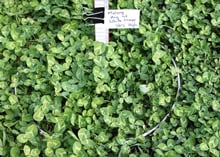
The Feed On Offer (FOO) library allows users to estimate FOO and nutritive value of grazed pastures. Animal performance is determined by the quality and quantity of pasture available and when known, better decisions can be made on allocation of stock to paddocks or supplementary feeding.
AWI Grower Network Resources
AWI Grower Networks
Further Links and Information
National
- Department of Agriculture, Fisheries & Forestry – Drought, disaster and rural support
- Bureau of Meteorology – Long range forecasts and climate drivers
- Meat & Livestock Australia - Drought management
New South Wales
- NSW Department of Primary Industries – DroughtHub
- NSW Local Land Services – Drought
- NSW Farmers - Drought Network
- Southern NSW Drought Resilience Adoption and Innovation Hub
- Southern QLD and Northern NSW Drought Resilience Adoption and Innovation Hub
Victoria
- Agriculture Victoria – Managing for and during drought
- Victorian Drought Resilience Adoption and Innovation Hub
South Australia
Western Australia
- DPIRD – Dry season resources
- South-West WA Drought Resilience Adoption and Innovation Hub
- Northern Western Australia and Northern Territory Drought Resilience Adoption and Innovation Hub
Queensland
- Queensland Government – Managing sheep in drought
- Department of Agriculture & Fisheries (Qld) – Drought assistance
- Southern QLD and Northern NSW Drought Resilience Adoption and Innovation Hub
Tasmania
- Department of Natural Resources and Environment Tasmania – Drought: facing the challenge and managing the risk (PDF)
- Department of Natural Resources and Environment Tasmania – Managing seasonal condition
- Tasmania Drought Resilience Adoption and Innovation Hub
Mental health contacts






